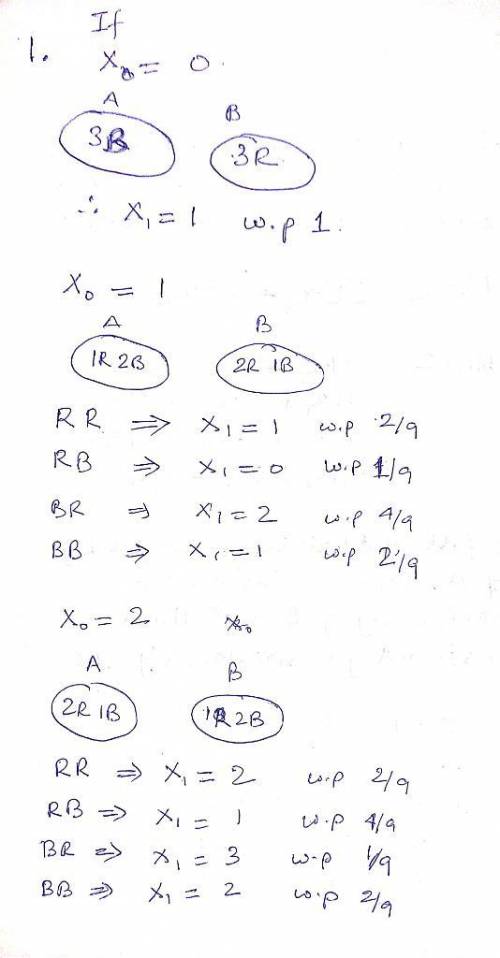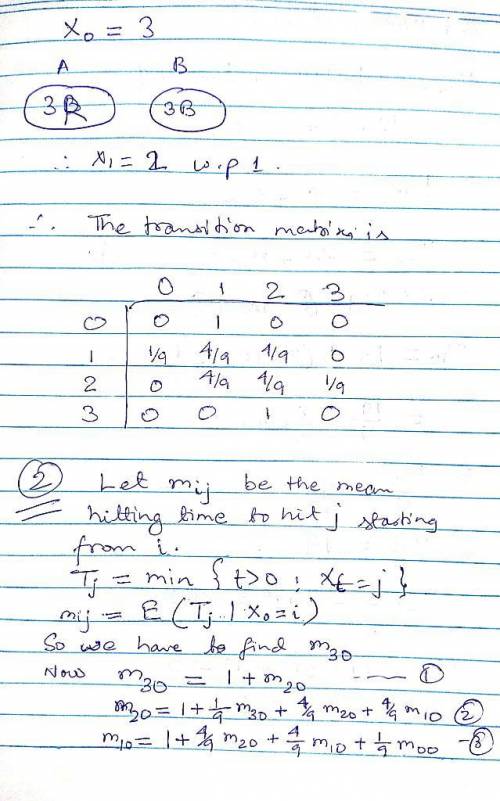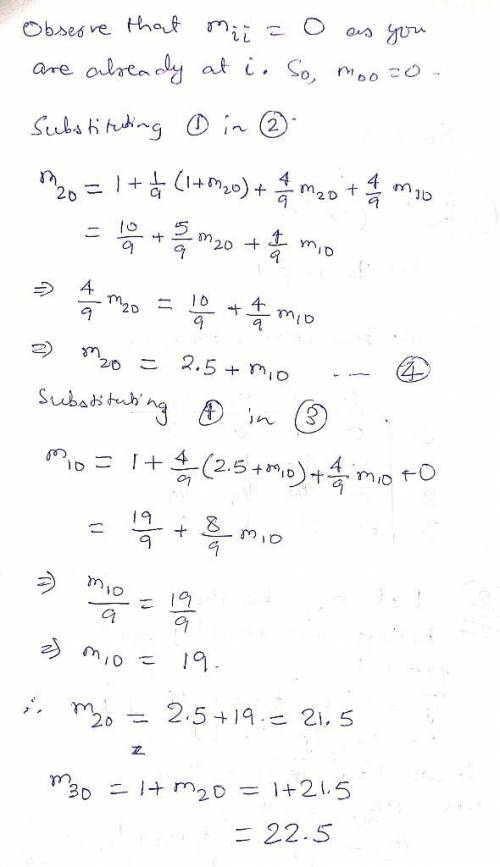
Mathematics, 14.04.2020 22:13 partykidjeremsih
Consider a total of 3 red balls and 3 blue balls. There are two urns labeled A and B, each containing 3 balls. An experiment consists of picking one ball at random from each urn and interchanging the balls. This experiment is repeated independently again and again. Let Xn be the number of red balls in urn A after n repetitions of the experiment. 1. (20pt) Write down the transition matrix of Markov chain {Xn, n 20 2. (20pt) Suppose that all the 3 red balls are in urn A at the beginning, i. e., X0-3. Compute the expected number of experiments we need to find that, for the first time, all the 3 red balls are in urn B.

Answers: 3


Other questions on the subject: Mathematics

Mathematics, 21.06.2019 12:30, wcraig1998
Use the function nest to evaluate p(x) = 1 + x + · · · + x50 at x = 1.00001. (use the matlab ones command to save typing.) find the error of the computation by comparing with the equivalent expression q(x) = (x51 − 1)/(x − 1).
Answers: 3

Mathematics, 21.06.2019 19:30, iicekingmann
Is the power produced directly proportional to the wind speed, give reasons for your answer?
Answers: 1

Mathematics, 21.06.2019 20:30, violetagamez2
Answer for 10 points show work you guys in advanced < 3
Answers: 1

Mathematics, 22.06.2019 00:00, carterhoward
What is the distance from (–3, 1) to (–1, 5)? round your answer to the nearest hundredth. (4 points) a. 3.60 b. 4.12 c. 4.47 d. 5.66
Answers: 1
You know the right answer?
Consider a total of 3 red balls and 3 blue balls. There are two urns labeled A and B, each containin...
Questions in other subjects:

Mathematics, 09.01.2020 23:31

Computers and Technology, 09.01.2020 23:31

Mathematics, 09.01.2020 23:31

Physics, 09.01.2020 23:31

Mathematics, 09.01.2020 23:31


History, 09.01.2020 23:31

Mathematics, 09.01.2020 23:31

Mathematics, 09.01.2020 23:31

Biology, 09.01.2020 23:31






